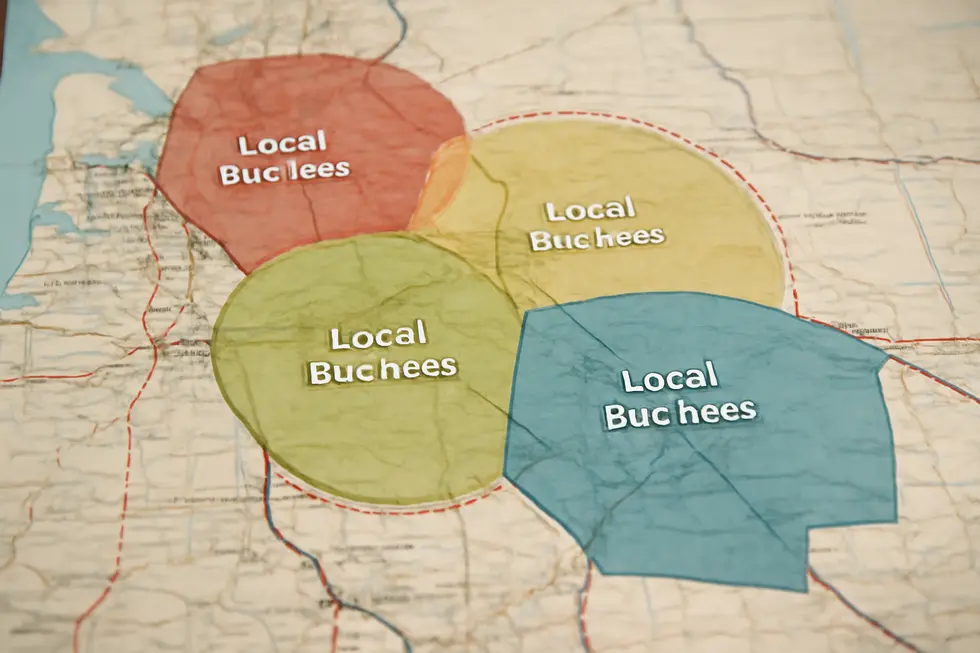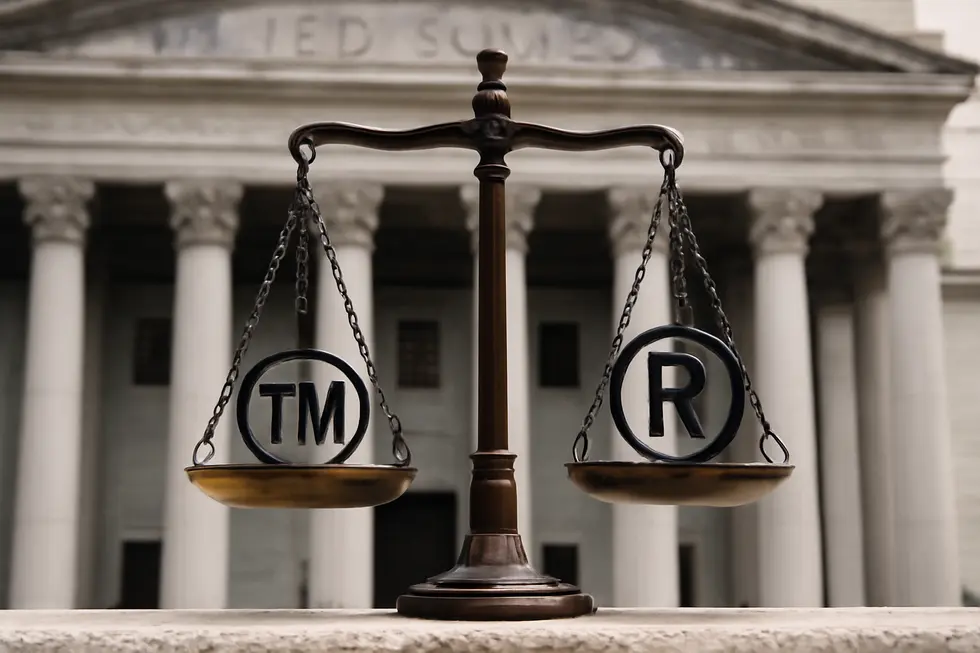Introduction
Building a strong brand is crucial for any business, and protecting that brand through trademarks plays a vital role in this process. Common law trademark rights emerge naturally when a business uses a mark in commerce, offering localized protection without formal registration. This protection, while immediate and cost-effective, comes with unique limitations and challenges that every business owner should understand. The first chapter explores how common law rights are created and their scope, providing foundational knowledge. Next, the geographic restrictions on these rights reveal critical boundaries of protection. Then, the difficulties businesses face when enforcing these rights highlight the importance of strategic action. The comparison chapter offers clarity on how common law rights measure against federal trademark registration, helping business owners make informed decisions. Finally, real-world examples and implications illustrate these principles in action, tying together the article’s insights to prepare business owners to safeguard their brands effectively.
Tables of Contents
Chapter 1: Creation and Scope of Common Law Trademark Rights
- How Common Law Trademark Rights Emerge and Their Geographic Boundaries
- Navigating Local vs. Nationwide Protection: Common Law Trademark Rights Compared to Federal Registration
- Economic Implications of Common Law Trademark Rights for Local Business Markets
- How Consumer Recognition Shapes the Boundaries of Common Law Trademark Rights
- Navigating Modern Complexities: How Technology and Geography Shape Common Law Trademark Protections
Chapter 2: Geographic Limitations in Common Law Trademark Rights
- Understanding the Territorial Reach and Natural Expansion of Common Law Trademarks
- Expanding Boundaries: Understanding the Natural Zone of Expansion Doctrine
- Overcoming Enforcement Hurdles Within Limited Common Law Trademark Territories
- Navigating Business Growth Amid Geographic Constraints of Common Law Trademark Rights
- Navigating Territorial Boundaries and Global Complexities of Common Law Trademark Rights
Chapter 3: Enforcement Challenges of Common Law Trademark Rights
- Navigating Territorial Boundaries: Geographic Limits Shaping Common Law Trademark Enforcement
- Unraveling Evidentiary Challenges in Defending Common Law Trademark Claims
- Navigating the Limitations of Remedies: Why Common Law Trademark Enforcement Faces Weaker Damages and Narrow Injunctions
- Overcoming Third-Party Ownership Disputes in Common Law Trademark Enforcement
- Overcoming Licensing and Quality Control Hurdles in Common Law Trademark Enforcement
Chapter 4: Comparison of Common Law Trademark Rights and Federal Trademark Registration
- Legal Origins and Foundations of Common Law and Federal Trademark Rights
- Navigating Geographic Reach: How Common Law and Federal Trademarks Define Territorial Protection
- Navigating Enforcement and Legal Protections: Common Law Trademark Rights Versus Federal Registration
- How Public Notice and Symbolism Shape Consumer Perception in Common Law and Federal Trademarks
- Balancing Cost and Coverage: Strategic and Economic Dimensions of Common Law vs. Federal Trademark Protection
Chapter 5: Practical Examples and Implications of Common Law Trademark Rights
- Harnessing Technology to Navigate and Enforce Common Law Trademark Rights
- Navigating Economic Realities: The Financial Trade-Offs of Common Law Trademark Rights
- Navigating Geographic Boundaries: How Common Law Trademark Rights Shape Local Brand Protection
- Navigating Societal Values and Cultural Sensitivities in Common Law Trademark Protection
- Navigating Local Enforcement: Legal Challenges and Cases in Common Law Trademark Protection
Chapter 1: Creation and Scope of Common Law Trademark Rights

1. How Common Law Trademark Rights Emerge and Their Geographic Boundaries
Common law trademark rights arise automatically when a distinctive mark is first used in commerce. Unlike federal trademarks, these rights depend on actual marketplace use and consumer recognition within a specific geographic area. Rooted in state law and unfair competition principles, common law rights protect businesses against local competitors using confusingly similar marks, thereby helping prevent consumer confusion. However, these rights are territorially limited—protection applies only where the mark has established recognition, such as within a city or region. This means another party may use the same mark in a distant area without infringement. While common law rights use the ™ symbol, they lack the nationwide reach, legal presumptions, and enforcement advantages federal registration provides. For businesses seeking localized yet cost-effective brand protection, understanding these geographic and legal boundaries is essential. More detailed insights on this topic can be found at common law trademark protection.
For a judicial example of these limitations, the case of Burger King of Fla., Inc. v. Hoots demonstrates how a local business was allowed to continue using the name in a confined area despite a federal registration by a national chain, illustrating the territorial scope of common law trademark rights. Further reading is available at UpCounsel.
2. Navigating Local vs. Nationwide Protection: Common Law Trademark Rights Compared to Federal Registration
Common law trademark rights emerge automatically through actual use of a distinctive mark in commerce, granting protection tied closely to the geographic area where the mark is recognized by consumers. Unlike federal registration, which provides nationwide protection regardless of market reach, common law rights are fundamentally use-based and localized. This localized nature demands that owners prove prior use and consumer recognition to enforce rights, making disputes more complex and resource-intensive. With no formal registration process, the ™ symbol signals these rights but lacks the presumptions of ownership and validity that registered marks enjoy. Federal registration, by contrast, offers robust benefits such as legal presumptions, easier enforcement in federal courts, statutory damages, and protection against imports of infringing goods. While common law rights are invaluable for immediate, cost-effective local protection, businesses expanding beyond regional markets benefit greatly from securing federal registration. For businesses seeking to understand these distinctions more deeply, resources on common law trademark protection offer practical insights. For further detailed legal analysis, see UpCounsel’s explanation on common law trademarks.
3. Economic Implications of Common Law Trademark Rights for Local Business Markets
Common law trademark rights emerge automatically when a business first uses a mark in commerce, offering essential but geographically limited protection. These rights help local businesses establish brand identity and deter direct competitors from confusingly similar marks within their immediate market. Unlike federally registered trademarks, common law rights do not provide nationwide coverage and require owners to prove prior use and consumer recognition in court—making enforcement more complex and costly. This localized scope means businesses relying solely on common law protections face challenges when others expand into their market from outside areas. Despite these constraints, such rights remain a practical initial safeguard for small enterprises seeking to build goodwill and market presence before pursuing federal registration aimed at broader protection. For more insights, see common law trademark business protection. External reference: https://www.upcounsel.com/common-law-trademark
4. How Consumer Recognition Shapes the Boundaries of Common Law Trademark Rights
Common law trademark rights arise automatically through a mark’s actual use in commerce, relying heavily on consumer recognition within a specific geographic area. These rights live and breathe where consumers associate a name, logo, or slogan with a particular source of goods or services. Unlike federally registered trademarks that offer nationwide protection, common law rights are inherently local, extending only where the mark is actively used and known by the public. This consumer-based recognition determines both the creation and the scope of these rights, as protection hinges on proving that consumers identify the mark with the business in that region. While these rights are cost-free to establish, their enforcement requires demonstrated distinctiveness and recognized use in the market. This localized nature reflects societal endorsement of the mark as a source indicator but also limits protection against identical marks outside that territory. For a deeper understanding of how usage and recognition interplay in shaping these rights, refer to this common law trademark protection resource. External insights at Trademark2Go elaborate on these foundational factors.
5. Navigating Modern Complexities: How Technology and Geography Shape Common Law Trademark Protections
Common law trademark rights arise immediately from the first actual use of a mark in commerce, providing protection limited to the geographic area where consumers recognize the mark. Historically grounded in centuries-old merchant practices, these rights safeguard local markets but face increasing complexity with technological advances. The internet and digital platforms blur traditional geographic limits, as businesses can reach consumers beyond their physical locales. This expansion challenges owners to prove distinctiveness and enforce rights in broader, often virtual markets without the benefits of federal registration. Additionally, geopolitical variations influence trademark priorities—some countries prioritize filing dates over use—complicating cross-border protections. While common law rights are vital for localized and immediate protection, navigating their scope amid technological and global shifts requires careful strategy. For further insight, see detailed guidance on common law trademark protection. More about these dynamics can be found at UpCounsel’s overview of common law trademarks here.
Chapter 2: Geographic Limitations in Common Law Trademark Rights

1. Understanding the Territorial Reach and Natural Expansion of Common Law Trademarks
Common law trademark rights arise through actual use of a mark within a specific geographic area, generally within a city, county, or state. These rights protect the mark only where consumers recognize it as a source identifier, limiting protection to that local marketplace. Unlike federally registered trademarks, which grant nationwide protection, common law rights do not prevent similar marks beyond this territory. However, the “natural zone of expansion” doctrine allows for reasonable geographic growth where consumer recognition extends into adjacent areas, reflecting typical business expansion patterns. Enforcement relies heavily on proving first use and consumer association within these boundaries, often requiring costly legal action. This localized nature reinforces why many seek federal registration for broader, nationwide protection. For more insight on local trademark protection, see common law trademark protection. A detailed legal discussion is available at Darrow Everett’s analysis of common law versus federal trademark rights.
2. Expanding Boundaries: Understanding the Natural Zone of Expansion Doctrine
The Natural Zone of Expansion Doctrine allows common law trademark rights to extend beyond their initial geographic area into adjoining markets where a business actively grows or consumers recognize its mark. This doctrine acknowledges that trademarks linked to actual market presence can reasonably protect nearby territories without reaching nationwide scope. However, expansion zones remain limited; courts require evidence of continuous business activities or consumer association in those adjoining areas to grant protection. This principle balances territorial limits with practical business growth, permitting coexistence of similar marks in non-overlapping zones without confusion. Unlike federally registered trademarks, which offer nationwide protection, this doctrine emphasizes protection tied closely to demonstrated use and reputation within a natural growth area. A regional bakery selling in neighboring towns perfectly illustrates this localized extension of common law rights. For more details on protecting such trademarks, see common law trademark protection. Additional insights and case examples can be found at this external resource.
3. Overcoming Enforcement Hurdles Within Limited Common Law Trademark Territories
Common law trademark rights are inherently limited to the geographic regions where the mark is actively used and recognized by consumers. This territorial confinement poses significant enforcement challenges. Unlike federally registered trademarks, owners of common law marks bear the full burden of proving priority of use, distinctiveness, and actual consumer recognition within the contested area. Since there is no nationwide presumption of ownership, protection depends heavily on tangible evidence such as sales, advertising, and customer testimonials localized in that specific region. Courts often require substantial proof that the mark is uniquely associated with the business in that locale, making litigation costly and complex. Additionally, remedies tend to be more restricted, with fewer options for damages or broad injunctions. Overlapping use of identical or similar marks in separate regions can further complicate enforcement, as each party’s rights are generally confined to their respective territories. These obstacles highlight why transitioning from common law protection to federal registration is often advisable for broader safeguards. For a deeper exploration of enforcement complexities in common law trademark protection, refer to resources like common law trademark protection. More detailed legal analysis can be found at UpCounsel’s guide on common law trademark.
4. Navigating Business Growth Amid Geographic Constraints of Common Law Trademark Rights
Common law trademark rights offer protection strictly within the geographic boundaries where a mark is actively used and recognized. This territorial limitation poses a significant challenge for businesses aiming to expand beyond their established local markets. Unlike federally registered trademarks that secure nationwide exclusivity, common law rights cannot prevent others from adopting similar marks outside the limited area of use, often resulting in “geographic coexistence.” The natural zone of expansion doctrine may extend protection into nearby regions, but such claims are difficult to establish and enforce. Businesses must also bear the burden of proving ownership and consumer association to defend their rights in court, increasing legal complexity during expansion. Licensing across different regions requires explicitly defined geographic limits to avoid disputes, especially when crossing international borders. To effectively manage growth and protect brand identity, companies relying on common law trademarks should strategically plan market presence or consider federal registration for broader, nationwide rights. For deeper understanding, see common law trademark protection and consult external insights on trademark rights here.
5. Navigating Territorial Boundaries and Global Complexities of Common Law Trademark Rights
Common law trademark rights are inherently territorial, providing protection strictly within areas where a mark is actively used and recognized by consumers. Unlike nationally registered trademarks, these rights do not extend beyond local or regional markets, allowing identical marks to coexist legally in distinct areas without causing confusion. This geographic limitation poses enforcement challenges, as owners must prove consumer recognition and prior use when defending rights outside their core markets—often requiring substantial evidence like sales and advertising records. Internationally, common law protections become more complex due to varied trademark principles; some countries emphasize first-to-file rather than first-to-use, affecting rights enforcement and licensing. Licensing agreements must clearly define geographic scope to ensure enforceability. For example, trademark licenses in China must be recorded with the national intellectual property office to be valid. Understanding these territorial and international constraints is vital for effectively safeguarding common law trademarks. For further reading on this topic, see territorial limitations of common law trademarks.
Chapter 3: Enforcement Challenges of Common Law Trademark Rights

1. Navigating Territorial Boundaries: Geographic Limits Shaping Common Law Trademark Enforcement
Common law trademark rights are inherently tied to the geographic area where the mark is actively used and has gained consumer recognition. This localized scope typically covers cities, counties, or states, limiting enforcement strictly within these boundaries. Owners must demonstrate prior use, distinctiveness, and consumer association to defend their mark, which entails costly evidence like sales data and advertising. While the “natural zone of expansion” doctrine allows some extension into neighboring areas, this protection is far narrower than the broad nationwide reach granted by federal registration. Without federal rights, businesses face increased risk of conflicting marks emerging outside their territories and must grapple with weaker remedies and uncertain litigation outcomes. Consequently, geographic restrictions impose significant barriers to territorial protection and complicate efforts to expand trademark enforcement beyond initial markets. For more on these constraints, see this registered trademark vs. common law trademark analysis.
2. Unraveling Evidentiary Challenges in Defending Common Law Trademark Claims
Common law trademark rights require trademark owners to overcome significant evidentiary obstacles to enforce their marks effectively. Unlike federally registered trademarks, which benefit from presumptions of ownership and validity, common law rights depend entirely on proving continuous and exclusive use within a specific geographic area. Owners must assemble detailed documentation—such as sales records, advertising, and consumer testimonies—that demonstrate public recognition and priority in their territory. Establishing a likelihood of confusion is also complex, often necessitating consumer surveys or witness affidavits to confirm that the relevant public associates the mark with their goods or services. Moreover, because common law protection is territorially confined, courts examine the overlap in market presence before granting relief. These burdens make litigation costly and the remedies limited, typically restricting enforcement to localized injunctions without access to statutory damages. This nuanced evidentiary landscape underscores why many businesses seek federal registration after securing initial local rights, facilitating stronger and broader legal protections. For a deeper dive into strategies on enforcing these rights, see comprehensive guidance from Trademark2Go on common law trademark business enforcement.
3. Navigating the Limitations of Remedies: Why Common Law Trademark Enforcement Faces Weaker Damages and Narrow Injunctions
Common law trademark rights provide crucial local brand protection but come with inherent enforcement weaknesses. Remedies such as injunctions are confined to geographic areas where the mark has established consumer recognition, limiting their reach compared to nationwide federal protections. Monetary damages under common law are typically modest, lacking statutory provisions for enhanced awards like treble damages, which are available to federally registered marks. Owners face a heavy evidentiary burden proving prior use, distinctiveness, and likelihood of consumer confusion within confined markets, complicating litigation. Unlike federal trademarks, common law marks lack presumptions of validity and ownership, increasing enforcement costs and difficulties. This local enforcement scope creates challenges against infringers operating outside recognized territories or online. While common law rights offer accessible initial protection, many businesses pursue federal registration to secure stronger, broader remedies under the Lanham Act. For a detailed discussion on common law trademark protection and enforcement challenges, see common law trademark protection. External resource: https://www.upcounsel.com/common-law-trademark
4. Overcoming Third-Party Ownership Disputes in Common Law Trademark Enforcement
Enforcing common law trademark rights often presents formidable challenges, especially when third parties contest ownership or priority. Unlike federally registered marks, common law trademarks offer no presumptive ownership, requiring claimants to prove prior use and customer recognition within a specific geographic area. This reliance on evidence makes disputes costly and outcomes uncertain. Geographic limitations further complicate matters, as multiple parties may lawfully use similar marks in non-overlapping regions, leading to conflicts over expansion and market presence. Competitors might assert earlier use or confusing similarity, triggering enforcement difficulties and potential loss of rights. Moreover, weak legal standing hinders enforcement of licensing agreements and quality control, weakening leverage against misuse. Courts also tend to award more limited remedies for infringement, reducing deterrence. These barriers underscore why navigating third-party disputes demands careful documentation and strategic legal action to protect common law trademarks effectively. For more insight into these challenges, see common law trademark protection.
Learn more at https://www.upcounsel.com/common-law-trademark
5. Overcoming Licensing and Quality Control Hurdles in Common Law Trademark Enforcement
Common law trademarks offer limited, localized rights that complicate licensing and quality control enforcement. Unlike federally registered marks, common law marks lack legal presumptions and nationwide protection, making it difficult to enforce quality standards in licensing agreements. Without strong legal backing, licensors face challenges ensuring licensees maintain consistent product or service quality, risking brand dilution or consumer confusion. This vulnerability exposes licensors to increased legal risks, especially when defending against third-party infringement claims. Managing quality control across diverse regions and licensees further complicates enforcement due to varying local standards and market conditions. Careful drafting of licensing contracts with explicit quality control measures and strict compliance oversight is essential. To bolster protection and ease enforcement, pursuing federal registration remains strongly advisable. For more on these legal intricacies, see the detailed insights on common law trademark protection and licensing risks at UpCounsel.[https://www.upcounsel.com/common-law-trademark]
Chapter 4: Comparison of Common Law Trademark Rights and Federal Trademark Registration

1. Legal Origins and Foundations of Common Law and Federal Trademark Rights
Common law trademark rights arise automatically through the actual use of a mark in commerce within a localized geographic area. Rooted in state common law principles of unfair competition, these rights protect against consumer confusion but require proof of continuous use and consumer recognition in that region. Unlike federally registered trademarks, common law marks lack formal registration and are not listed in the USPTO database, limiting their enforceability and geographic scope. Federal trademark rights, established through formal registration under the Lanham Act, provide nationwide protection, legal presumptions of ownership, and access to federal courts. This statutory framework offers stronger remedies and broader protection regardless of actual market presence. While common law rights offer immediate, cost-effective brand defense locally, federal registration secures expansive, enforceable rights essential for businesses aiming for national reach. For a deeper understanding, see more on common law trademark protection.
For additional legal context, refer to the Burger King case, which exemplifies the geographic limitations of common law rights against federally registered marks.
2. Navigating Geographic Reach: How Common Law and Federal Trademarks Define Territorial Protection
Navigating Geographic Reach: How Common Law and Federal Trademarks Define Territorial Protection
Common law trademark rights arise solely from actual use within a specific area, limiting protection to where consumers recognize the mark. This territorial nature means a mark’s exclusive rights often cover only the local city, county, or state of operation. Such localized rights may coexist with identical or similar marks elsewhere without infringement, as consumer confusion is unlikely outside that region. In contrast, federal trademark registration grants nationwide protection irrespective of actual use location. It provides public notice through the USPTO database, legal presumptions favoring the registrant, and access to federal courts, streamlining enforcement nationwide. While common law rights offer immediate, low-cost local safeguards, federal registration ensures broad geographic coverage and stronger legal remedies. This distinction guides businesses in advancing from localized protection toward comprehensive nationwide trademark security. For additional insight on protecting marks through actual use, see common law trademark protection.
Learn more about this geographic limitation from the detailed legal analysis in the case Burger King of Fla., Inc. v. Hoots: https://www.upcounsel.com/common-law-trademark
3. Navigating Enforcement and Legal Protections: Common Law Trademark Rights Versus Federal Registration
Common law trademark rights afford protection based on actual use within a limited geographic area, requiring owners to actively enforce their rights through cease-and-desist letters or litigation in state or federal courts. Since these rights lack federal presumptions of ownership, proving prior use and consumer confusion is essential but often challenging. Remedies include injunctions, monetary damages, and occasionally destruction of infringing goods, though enforcement can be complicated without the ® symbol and nationwide recognition. In contrast, federal trademark registration offers robust legal protections with nationwide reach, including presumptions of validity and ownership, streamlined federal court enforcement, and expanded remedies such as treble damages. The registration also facilitates quality control in licensing, guarding the mark’s value more effectively. Thus, while common law rights provide immediate but localized protection, federal registration empowers trademark owners with stronger, more enforceable legal mechanisms. For businesses seeking wider protection and easier enforcement, understanding these distinctions is critical. For a detailed discussion on common law trademark enforcement complexities, see common law trademark protection and external insights at trademark2go.com.
4. How Public Notice and Symbolism Shape Consumer Perception in Common Law and Federal Trademarks
How Public Notice and Symbolism Shape Consumer Perception in Common Law and Federal Trademarks
Common law trademark rights arise automatically through actual use, granting localized protection without formal registration or centralized public notice. Owners mark their claim with the ™ or SM symbols, but cannot use the ® symbol, limiting visible legal signaling. Consumer recognition depends heavily on local market familiarity, making enforcement challenging as owners must prove priority and recognition in their geographic area. In contrast, federally registered trademarks benefit from a nationwide public record in the USPTO database and are identified by the ® symbol, which provides constructive notice to consumers and competitors nationwide. This official symbol enhances consumer confidence and deters infringement by signaling stronger legal protections. Federal registration also presumes validity and ownership, easing enforcement through federal courts and offering broad protection regardless of geographic reach. Thus, symbolism and public notice significantly influence consumer perception and the practical strength of trademark rights, underscoring the advantages of federal registration over common law claims.
For more detailed insights on protecting unregistered marks, see common law trademark protection.
[1] United States Patent and Trademark Office (USPTO) Trademark Basics.
5. Balancing Cost and Coverage: Strategic and Economic Dimensions of Common Law vs. Federal Trademark Protection
Common law trademark rights emerge immediately through use in commerce, offering cost-effective, localized protection ideal for small or regional businesses. However, their geographic limits mean expansion beyond local markets introduces risks, such as competing marks outside the recognized area. Enforcement under common law is complex and costly, requiring owners to prove the mark’s association with consumers without centralized registration. Conversely, federal registration demands upfront fees yet delivers nationwide rights, presumption of validity, and streamlined enforcement through federal courts. This robust protection facilitates scalable growth, supports licensing opportunities, and provides statutory remedies against infringement. The economic tradeoff involves saving initial costs with common law rights while potentially facing expensive litigation or forced rebranding if conflicts arise nationally. Federal registration, by contrast, safeguards brand value across broader markets and reduces legal uncertainties essential for long-term business development. For an in-depth examination of these implications, including pivotal case analyses, see the detailed expert resource at UpCounsel. To explore practical common law trademark protection strategies, visit common law trademark protection.
Chapter 5: Practical Examples and Implications of Common Law Trademark Rights

1. Harnessing Technology to Navigate and Enforce Common Law Trademark Rights
Harnessing Technology to Navigate and Enforce Common Law Trademark Rights
Common law trademark rights, inherently limited to geographic areas where a mark is actively used, face unique enforcement challenges amplified by their territorial scope. Technological innovations now play a crucial role in overcoming these hurdles, allowing businesses to monitor and protect their marks more efficiently. AI-powered tools scan digital platforms, from websites to social media, to detect unauthorized use and counterfeits early, enhancing enforcement reliability. Emerging branding elements like sound marks and virtual logos require fresh strategies for proof of distinctiveness and protection in digital contexts. Moreover, the rise of virtual marketplaces, including NFTs and metaverse environments, demands adaptable legal frameworks, as illustrated in cases affirming trademark rights online. AI also refines trademark searches by rapidly identifying potential conflicts, helping businesses avoid inadvertent infringement. This convergence of technology and common law rights strengthens localized brand protection within an increasingly digital commercial landscape.
For more on foundational principles, see common law trademark protection.
Reference: Hermès International v. Rothschild
2. Navigating Economic Realities: The Financial Trade-Offs of Common Law Trademark Rights
Navigating Economic Realities: The Financial Trade-Offs of Common Law Trademark Rights
Common law trademark rights offer immediate, cost-free brand protection limited to local markets where the mark is actively used. This accessibility benefits startups and small businesses by reducing upfront fees. However, these rights restrict protection to the geographic area of actual use, making expansion vulnerable to competitors with federally registered marks. Enforcing common law rights can incur significant legal expenses, as owners lack presumptions of validity and must prove consumer recognition and priority in court. This often leads to costly disputes and potential displacement from broader markets. Furthermore, without federal registration, trademarks may hold diminished economic value, limiting licensing or franchising opportunities and investor appeal. In contrast, investing in federal registration affords national protection, legal advantages, and stronger brand valuation. Businesses must weigh initial savings against long-term economic risks to make informed trademark decisions.
For a deeper exploration of these financial trade-offs, see Trademark2Go’s common law trademark protection guide and the detailed analysis at Trademark2Go on common law trademark usage and enforcement costs [1].
3. Navigating Geographic Boundaries: How Common Law Trademark Rights Shape Local Brand Protection
Common law trademark rights arise from actual use of a mark within specific geographic areas, providing protection where the mark is recognized by consumers. Unlike federally registered trademarks with nationwide reach, these rights are limited to local markets, allowing businesses to prevent nearby competitors from using confusingly similar marks. This geographic specificity reflects the U.S. and other ‘first-to-use’ systems, contrasting with ‘first-to-file’ regimes prevalent globally. For instance, a local business may have strong common law rights yet face challenges expanding beyond its market without federal registration. Internationally, regional IP organizations harmonize trademark laws, adding layers of complexity to enforcement across borders. Understanding these geopolitical frameworks is essential for crafting effective brand protection strategies that balance immediate, localized rights with the benefits of broader, federally backed trademarks. For more on localized protections, see common law trademark protection. More detailed insights can be found at UpCounsel’s guide on common law trademark rights.
4. Navigating Societal Values and Cultural Sensitivities in Common Law Trademark Protection
Common law trademark rights uniquely reflect the interplay between local business identity and community values. These rights recognize that trademarks often embody culturally significant elements tied to a specific region, fostering a strong sense of localized brand identity. While they protect against consumer confusion and unfair competition within defined areas, their geographical limitation emphasizes the delicate balance between safeguarding business reputations and allowing cultural expression to flourish freely. Ethical considerations arise when trademarks include indigenous or community-inspired designs, raising issues of respect versus cultural appropriation. Common law enforcement must avoid monopolizing generic or culturally functional elements to maintain fairness and social harmony. Emerging perspectives advocate for integrating human rights and broader social goods—like environmental sustainability—into trademark law. This evolving framework challenges stakeholders to balance legal protection, cultural respect, and public interest thoughtfully. For practical guidance on securing these rights locally, see common law trademark protection. More insights on cultural and ethical dimensions can be found on patentpc.com.
5. Navigating Local Enforcement: Legal Challenges and Cases in Common Law Trademark Protection
Navigating Local Enforcement: Common law trademark rights arise from genuine use of a mark in commerce, offering protection primarily within the geographic area where the mark is recognized by consumers. Unlike federally registered trademarks, owners must prove ownership through sales records, advertising, and consumer surveys when enforcing these rights, often in state courts. A landmark example is Burger King of Fla., Inc. v. Hoots, affirming that local businesses can maintain exclusive use of a mark within their area despite a national registration elsewhere. Enforcement typically begins with cease-and-desist letters but can escalate to seeking injunctions and damages if necessary. However, such enforcement faces challenges since common law rights lack nationwide presumptions, rely on demonstrated consumer association, and do not appear in federal registries. This localized scope underscores the importance of understanding territorial limits while protecting brand identity in specific markets. For businesses seeking deeper insight, exploring common law trademark protection strategies offers valuable guidance. More details on enforcement nuances can be found in Trademark2Go’s comprehensive resource.
Final thoughts
Common law trademark rights offer a valuable, immediate form of brand protection for business owners operating without federal registration. These rights arise naturally through actual use of a mark in commerce and help protect against local competitors using confusingly similar marks. However, their geographic limitations and enforcement challenges can constrain their effectiveness, especially in disputes requiring proof of consumer recognition and ownership. Comparing common law rights to federal registration highlights both their strengths in cost-effective protection and weaknesses in legal enforceability and scope. By understanding these dynamics and reviewing practical examples, business owners can make informed decisions about how to best protect their trademarks. Ultimately, leveraging common law trademark rights wisely forms an essential part of building a resilient brand foundation.
Your IP is the foundation of your success – let’s protect it together before it’s too late. We can’t wait to help you turn your ideas into legally secured assets.
About us
undefined


